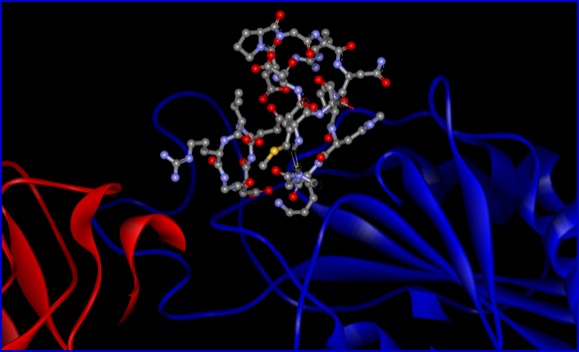Molecular Targeting and Delivery

The general objective is the identification and verification of new molecular mechanisms that regulate the molecular targeting to systems at different complexity, in order to modulate their biological and genetic functions, and to study the specific delivery processes.
The research activity is focused on the study of molecular recognition in complex system based on protein-protein, protein-peptide, oligonucleotides-protein interaction. The research activity rely on the study on new molecular mechanism regulating molecular systems with different complexity, to design new selective molecules for the early diagnosis and therapy of high social impact diseases.
Another research activity is based on the study of delivery of bio conjugate system to identify possible new strategy for the formulation of active pharmaceutical compounds.
In particular, the research activity is focused on : 1) the development of synthetic systems able to be recognized by biological targets, 2) the development of bio conjugates for drug delivery and diagnostics;. Most important achievements of the group are: a) the development of new molecules to selectively inhibit the interaction of specific factors involved in tumor angiogenesis and expression of integrin receptors (v3, v5 etc), for diagnostic and therapeutic applications; b) the development of peptide based systems able to interact with receptor 2 of human epidermal growth factor (HER2), involved in different tumor forms.
– L Pirone, A Del Gatto, S Di Gaetano, M Saviano, D Capasso, L Zaccaro, E Pedone. “A Multi-Targeting Approach to Fight SARS-CoV-2 Attachment” Front Mol Biosci. (2020) 7:186.
– D Capasso, A Del Gatto, D Comegna, L Russo, R Fattorusso, M Saviano, S Di Gaetano, and L Zaccaro. “Selective Targeting of v5 Integrin in HepG2 Cell Line by RGDechi15D Peptide”. Molecules. (2020) Sep 19;25(18):E4298.
– S De Luca , V Verdoliva and M Saviano ” Peptide Ligands Specifically Targeting HER2 Receptor and the Role Played by a Synthetic Model System of the Receptor Extracellular Domain: Hypothesized Future Perspectives” J Med Chem (2020) Nov 23. doi: 10.1021/acs.jmedchem.0c01340.
– G Pepe, E Calce, V Verdoliva, M Saviano, V Maglione, A Di Pardo and S De Luca. “Curcumin-Loaded Nanoparticles Based on Amphiphilic Hyaluronan-Conjugate Explored as Targeting Delivery System for Neurodegenerative Disorders.” Int J Mol Sci. (2020) 21(22):8846.


